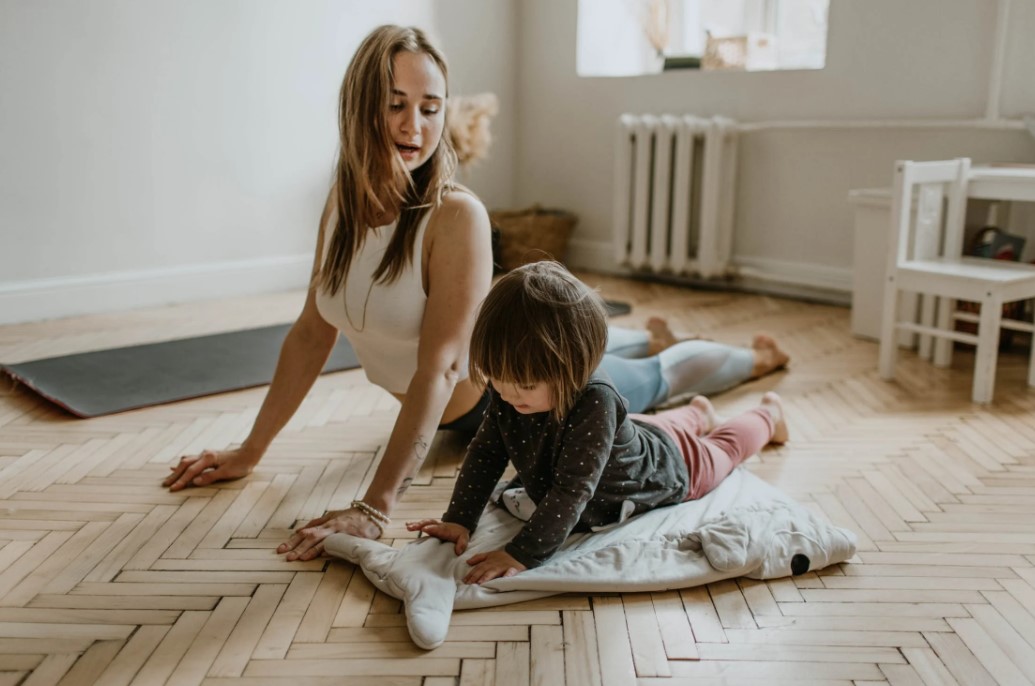
The importance of keeping up with your home exercise program during Lockdown
To say it’s been an unpredictable month for our society, our health and our economy would be an understatement.
But we also need to remember that we don’t need to do it all alone.
With many of us social distancing and homebound for the most part, it’s important to ensure that you are keeping active and following any home exercise programs that have been prescribed by your physio.
The importance of Home Exercise Programs
Patient compliance with home exercises during rehab is one of the most accurate indicators of rehab success. Many patients find it hard to stay consistent with a home exercise program because of their work, family, and school commitments.
But now that we’re all at home, there’s plenty of time to make sure we’re all doing what we need to in order to recover from those injuries.
Research has shown that patients who follow their prescribed exercises are more likely to achieve their goals and demonstrate a greater increase in physical function.[1]
Exercise at home is designed by your physio to continue the progress made at the clinic. By working on things like increasing your flexibility and stamina at home, home exercise programs allow you to increase function and improve muscle memory so that progress is actually gained instead of lost between visits.
- Home exercises are specifically designed to improve muscle memory
- Research shows that patients who comply with their HEP are more likely to reach their rehab goals like pain reduction and physical movement
- Home exercises can be the beginning of a new active lifestyle
- Home exercise compliance helps prevent recurring injury and flare-ups
Inactivity causes or exacerbates a number of musculoskeletal conditions
Humans are designed to stand upright and move. Our heart and cardiovascular system work more effectively upright and the bowel also functions more efficiently when you are upright and active.
Physical inactivity contributes to over three million preventable deaths worldwide each year and is the fourth leading cause of death due to preventable diseases. In Australia, physical inactivity is the second highest cause of cancer, just behind tobacco smoking.
The Australian Health Survey results show:
- 60% of Australian adults do less than the recommended 30 minutes of physical activity each day
- One in 10 young people (aged 5–17) do the recommended 60 minutes of physical activity every day
- Less than one third of children and young people have no more than two hours of screen time each day
- Almost 70% of Australian adults can be classed as either sedentary or having low levels of physical activity
The Australian Health Survey also found that it was young adults who achieved the highest level of activity of all adults, with 53 per cent of 18–24 year olds being classed as sufficiently active.
People tend to become less active as they age.
The lowest level of activity was among those aged 75 or over, with that group achieving only 20 minutes of activity each day on average. Only one in four people aged 75 or over were classed as sufficiently active against Australia’s Physical Activity and Sedentary Behaviour Guidelines.
Neck pain from looking down at your phone or computer screen for too long?
Another pitfall of spending extra time at home, is the prolonged time that can be spent looking down at mobile phones or tablets and working in a less than optimal ergonomic set up.
To release a tight neck, try a chin tuck exercise, also known as neck retraction. While standing or sitting upright, keep your spine straight and push your head forward, jutting your chin out as far as possible. Slowly reverse the movement by pulling your head back as far as possible, as if recoiling away from someone. Your head should stay level throughout the stretch, which you’ll feel at the base of your neck. Repeat a few times.
To relieve tension that has built up in both your neck and shoulders simultaneously, face forward, tilt your right ear down towards right shoulder, leaving your left arm hanging straight down to increase the stretch. Hold for 20 to 60 seconds and repeat on the left side up to four times.
Although we are seeing patients in the clinic as normal, we are offering extra services for any “at risk” patients via home-visits or tele-health online physio.
All Physiotherapy and Exercise Physiology appointments will still be available in the clinic, at home and online via tele-health. Please call us on 9428 5772 to organise a time or email us at [email protected]
Stay healthy and we hope to see you in the clinic soon.
[1] Beinart NA, Goodchild CE, Weinman JA, Ayis S, Godfrey EL. Individual and intervention-related factors associated with adherence to home exercise in chronic low back pain: a systematic review. The Spine Journal, 2013, 13:1940–195



